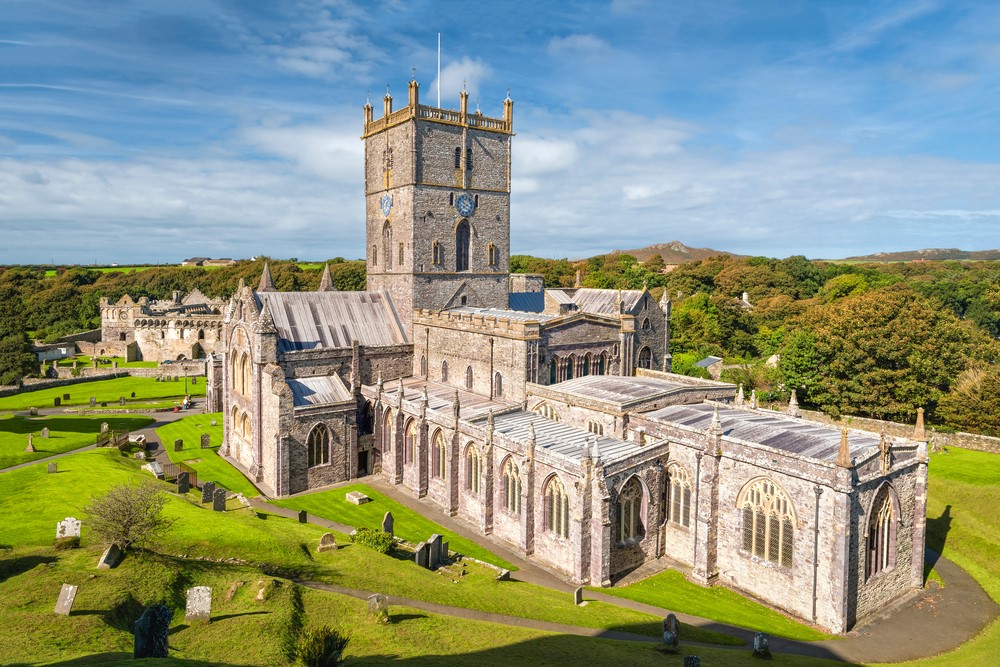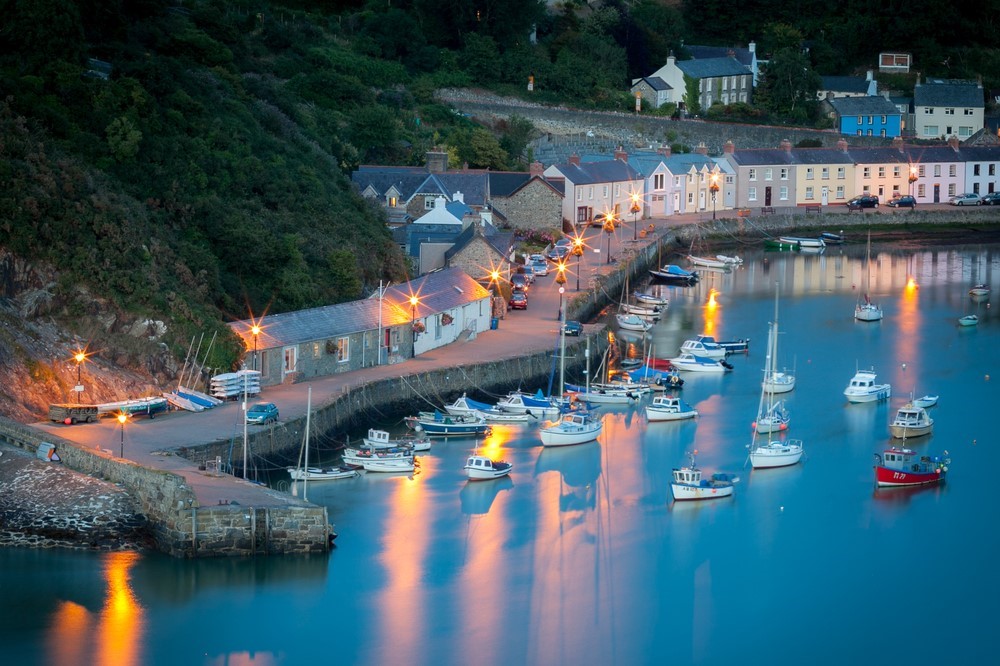Top 6 Highlights on the Pembrokeshire Coast Path
By Mark Wright
The Pembrokeshire Coast Path follows the rugged South Wales coastline for 186 miles and delivers a breathtaking combination of dramatic clifftops and sublime sandy beaches. Add to that the obvious sea birds, the off shore islands, a dazzling display of flowers and plants, historic towns and traditional fishing villages, and you have the setting for one of the nation’s most loved long distance walking holidays.
As well as offering the route in its entirety from Amroth to St Dogmaels we also offer 3 shorter holidays allowing you to complete the route over time in more manageable sections should you choose. They are the South Coast: Amroth to Milford Haven. The Central Coast: Milford Haven to St David’s and finally the North Coast: St David’s to St Dogmaels.
Whether you choose to do all three in turn, the whole thing in one single holiday or simply choose just one section as your Pembrokeshire Coast experience, you are guaranteed of a thoroughly enjoyable and hugely rewarding experience.
To help whet your appetite, we’ve put together just six highlights on the Pembrokeshire Coast Path, it could quite easily have been sixteen. This is by no means a definitive list, if we wrote it again tomorrow, it would probably be a different six, such is the diversity on this spectacular route.
Tenby

Tenby, with its delightful Harbour, watched over by a guard of brightly coloured houses, is perhaps the most popular seaside town in Wales. Rich in history and surrounded by the imposing 13th-century town walls, Tenby has been a tourist destination for over 200 years.
In addition to its iconic harbour, Tenby is renowned for fabulous stretches of soft golden sands, including Castle Beach. On the headland overlooking the harbour, stands the ruins of Tenby Castle.
There’s a vast array of shops in the town showcasing their local produce as well as a variety of attractions too, including wildlife parks and boat trips.
Tenby boasts a maze of narrow little streets with the bars and restaurants geared up for al fresco dining during the summer months. After enjoying some local cuisine take a stroll to the harbour beach, nestled within the safety of the harbour walls and sit and relax a while. Just don’t blame us if you never want to leave!
Green Bridge of Wales

Between Broadhaven and Merrion stands the magnificent 80 ft, Green Bridge of Wales, a natural arch formed from Carboniferous Limestone. Spanning more than 66 ft it has been described by the Natural Arch and Bridge Society as ‘probably the most spectacular arch in the United Kingdom’.
Over time storms battering the coastline have smashed pebbles against the rocks with sand particles wearing away the surface, and chemical erosion dissolving the limestone. First to be worn away are the folds and small faults that are present in the rocks. The result of which, over countless millennia, is the creation of many unusual landforms such as the Green Bridge of Wales. Erosion took place on both sides of the protruding headland forming caves which extended further and further until finally they met, ultimately forming the incredible arch that we see today.
Storm Ophelia in October 2017 claimed a considerable chunk of rock (you can see the freshly exposed rock in the image), an event that could sadly hasten the unavoidable demise of this iconic landmark. What remains will simply become a sea stack.
The site lies within the Ministry of Defence’s Castlemartin military training area and although it is normally open to the public, it can at times be closed with a diversion in place.
Solva Harbour

The beautiful village of Solva with its idyllic harbour tucked into the cliffs is one of the most impressive locations on the Pembrokeshire Coast Path. The harbour is a great example of a ‘ria’, a coastal inlet formed by the partial submergence of an unglaciated river valley.
During high tide the beach is just a narrow strip of sand at the head of the inlet, however at low tide only a stream of water remains, running down the middle of the harbour. Many people take the opportunity to catch fish, shrimp and crabs.
Near the mouth of the inlet there are plenty of rock pools and caves providing hours of enjoyable exploration. Several paths lead up to the rocky headland guarding the harbour, known as The Gribin. The views from here along the coast and across St Bride’s Bay are simply spectacular.
St Davids … the smallest city in Britain

St Davids is Britain’s smallest city. In fact it’s little more than the size of a village! However, with its fascinating history, spectacular coastal scenery and celebrated for its beauty and wealth of wildlife, it’s one of the most eagerly awaited destinations on the Pembrokeshire Coast Path.
The patron saint of Wales, St David is believed to have been born on a clifftop during a fierce storm. His birthplace is marked by the ruin of a small ancient chapel near to a holy well.
Built in the 12 century, St David’s Cathedral emerged as one of the most significant shrines of medieval Christendom. Next to the cathedral are the magnificent ruins of the medieval Bishops Palace. Dating back to the 14th century but derelict from the 18th, this impressive medieval ruin still conveys the prosperity and power of the medieval church.
Despite its small size, the city today boasts a fine selection of cafes, restaurants and hotels.
Ramsey Island

Owned and managed by the Royal Society for the Protection of Birds (RSPB), this magnificent island has cliffs rising to almost 400 ft, making them the ideal setting for breeding seabirds, flocks of choughs and peregrines. Factor in a rest day from the trail and take the short boat trip to the island and enjoy a stroll along the coastal heathland marvelling at the wildlife and soaking up the spectacular views across the Irish Sea.
Atlantic Grey seals return to the island’s beaches from mid-August to give birth and mate. By the middle of September sometimes more than 60 seal pups can be seen on a single beach. Watch from the clifftops above and you’ll see females coming in and out to feed their hungry pups while the males fight to retain territory.
Fishguard

This otherwise peaceful and tranquil setting is famous as the location of ‘The Last Invasion of Britain’ when in 1797 French troops landed nearby. Local heroine Jemima Nicholas captured many of the invaders single handed and the Frenchmen later negotiated their surrender at the Royal Oak inn and laid down their arms on Goodwick Sands. Take time to visit the town hall and view the impressive 100 ft ‘Last Invasion Tapestry’, designed and hand-woven by local women on the invasion’s bicentenary.
Another must see is the pretty harbour, bordered by picturesque cottages. If you have the time why not try kayaking or paddle boarding before rewarding yourself with fresh crab sandwiches.
Fishguard is a popular town with several lively pubs and plenty of places for good food. There’s an independent theatre and cinema and the town hosts a number of music festivals throughout the year featuring jazz, blues and classical music.
For more information on the Pembrokeshire Coast Path and help choosing your itinerary email us [email protected] or call 017687 72335 to speak with one of our Customer Sales and Support team.